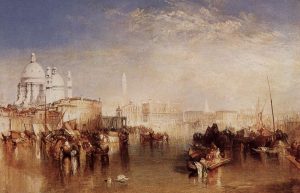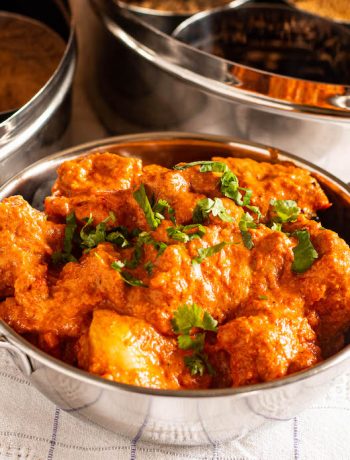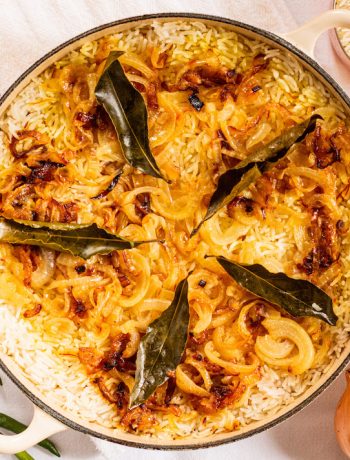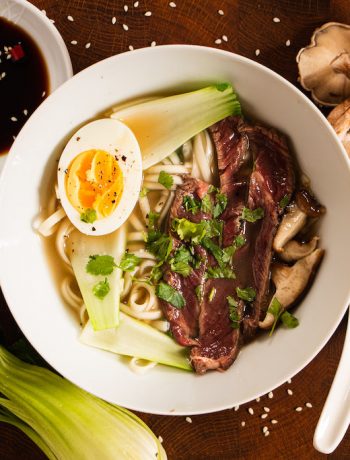If there is one dish that my little boy Simon (10) loves more than any other, it is a recipe we picked up from the BBC Good Food web site called ‘Venetian duck ragù.’ The recipe was written by Cassie Best, senior food editor for BBC Good Food. Best trained as a chef at Leith’s School of Food and Wine, where she won a place on an internship scheme run with BBC Good Food.
While Venetian duck ragù is a firm family favourite, I had never done a proper nosey on it, and I considered its Italian authenticity to be suspect at best – the recipe was written by a Brit, who was trained by a another Brit in Britain, and the text was published on the web pages of the British Broadcasting Corporation. I mean what makes a ragù of duck cooked in cinnamon particularly Venetian?

Cassie Best, Senior Food Editor, BBC Good Food
Well it turns out that Cassie Best had done her homework on this. Googling around and translating Italian recipe sites reveals plenty of pasta dishes that follow the principles of ragù but add cinnamon and sometimes other spices.
This cute riff on the classic Italian ragù has its origins in the European spice trade. Way back in 1173, Romano Mairano was a Venetian banker on his uppers and facing bankruptcy having just undertaken a heroic evacuation of Acre in the face of withering violence from the local Moors. To reverse his fortunes, Mairano, building on the ideas of his forefathers, decided to start trading in pepper. He would sail to Alexandria, obtain his spice, and then make the hazardous, pirate-threatened and uninsured return voyage. Once back in Venice, Mairano was rewarded for his risk by selling his spice for many times the price he paid for it. Many Venetians of the day did exactly the same thing, and Venice rode high and lived well on the insatiable European demand for spice.

Venice, as painted by JMW Turner (1775–1851)
The story of spice ultimately shaped the political geography of the world, creating the Raj, destroying the Dutch, and founding Manhattan. If you are interested in the history of the spice trade, then I recommend you read Giles Milton’s Nathaniels Nutmeg.
The recipe here is the one from Cassie Best, restyled for The Nosey Chef, with some domestic notes from us.
Ragù d'anatra alla Veneta
Ingredients
- 1 tbsp olive oil
- 4 duck legs
- 2 onions, finely chopped
- 2 fat garlic cloves, minced
- 2 tsp ground cinnamon
- 2 tsp plain flour
- 250ml Italian red wine
- 800g canned chopped tomatoes
- 250ml chicken stock
- 3 rosemary sprigs, picked and chopped
- 2 bay leaves
- 1 tsp sugar
- 2 tbsp milk
- 600g paccheri or pappardelle (these are large-format pastas that enable the meaty, long-shred duck to stick to them – spaghetti will not do it, sorry)
- 2 tbsp Parmesan, grated
- 1 tbsp parley, chopped
Instructions
Heat the oil in a large pan. Add the duck legs and brown on all sides for about 10 mins, focussing on crisping that skin.
Remove the duck to a plate and set aside.
Add the onions to the pan and cook for 5 mins until softened. Add the garlic and cook for a 1 minute.
Stir in the cinnamon and flour and cook for a further minute. Return the duck to the pan, add the wine, tomatoes, stock, herbs, and sugar. Bring to a simmer, lower the heat, season, cover with a lid, and cook for 2 hours, stirring occasionally.
Lift the duck legs out of the sauce with a slotted spoon and place on in a large bowl. Pull off and discard the fatty skin. Shred the meat with two forks and discard the bones. Add the meat back to the sauce with the milk and simmer, uncovered, for a further 10-15 mins while you cook the pasta.
Cook the pasta following pack instructions. If you are using fresh like us, then bring a large pan of salted water to the boil, add the pasta, bring back to the boil and cook for 2 minutes. Drain the pasta and add the it to the ragu. Stir to thoroughly coat all the pasta in the sauce and cook for 1 minute longer,
Serve with grated Parmesan and a sprinkling of parsley.
Notes
Paccheri and pappardelle can be hard to find in dried form in British supermarkets. The Nosey Chef always makes these from flour, salt and eggs, which is not so hard after a second or so go at it.




 (12 votes, average: 3.83 out of 5)
(12 votes, average: 3.83 out of 5)


2 Comments
Niv Parnes
10/07/2019 at 6:53 pmMade this for my family and they absolutely loved it. This is definitely a keeper!
Nigel Eastmond
10/07/2019 at 7:02 pmThanks, Niv. This is my son’s favourite too. He asked for it every week. Enjoy.